On the Importance of Data Quality Assessment of Crowdsourced Meteorological Data
Abstract
1. Introduction
- What is the general quality of raw (i.e., unmodified, uncorrected) crowdsourced meteorological data retrieved from the PWS network?
- What is the degree of potential departure of the PWS signal from the authoritative measurements?
- What is the degree of potential deviation between individual neighbouring PWS?
- What are the implications of using the potentially faulty PWS data for empirical and numerical research?
2. Materials and Methods
2.1. Data Acquisition
2.2. Towards a Comparative Analysis
2.3. Data Exploration
3. Results
3.1. On the Quality of Raw PWS Data
3.2. On the Discrepancies between PWS and Authoritative Data
3.3. On the Discrepancies between the Neighbouring PWS Data
4. Discussion
4.1. Summarized Observations
4.2. Comparison over Multiple Years
4.3. On the Implications of Using Faulty PWS Data for Empirical Research and Numerical Simulation
4.4. Replication Potential to Other Cities
4.5. Future Prospects for Correcting Faulty Data
5. Conclusions
Author Contributions
Funding
Institutional Review Board Statement
Informed Consent Statement
Data Availability Statement
Conflicts of Interest
References
- Hamdi, R.; Kusaka, H.; Doan, Q.-V.; Cai, P.; He, H.; Luo, G.; Kuang, W.; Caluwaerts, S.; Duchêne, F.; Van Schaeybroek, B.; et al. The State-of-the-Art of Urban Climate Change Modeling and Observations. Earth Syst. Environ. 2020, 4, 631–646. [Google Scholar] [CrossRef]
- Muller, C.; Chapman, L.; Grimmond, C.S.B.; Young, D.; Cai, X. Sensors and the city: A review of urban meteorological networks. Int. J. Climatol. 2013, 33, 1585–1600. [Google Scholar] [CrossRef]
- Marsh, A.S.; Negra, C.; O’Malley, R. Closing the Environmental Data Gap. Issues Sci. Technol. 2009, 25, 69–74. [Google Scholar]
- Masson, V.; Lemonsu, A.; Hidalgo, J.; Voogt, J. Urban Climates and Climate Change. Annu. Rev. Environ. Resour. 2020, 45, 411–444. [Google Scholar] [CrossRef]
- Wong, P.P.Y.; Lai, P.-C.; Hart, M. Microclimate Variation of Urban Heat in a Small Community. Procedia Environ. Sci. 2016, 36, 180–183. [Google Scholar] [CrossRef]
- Kousis, I.; Pigliautile, I.; Pisello, A.L. Intra-urban microclimate investigation in urban heat island through a novel mobile monitoring system. Sci. Rep. 2021, 11, 9732. [Google Scholar] [CrossRef]
- Vuckovic, M.; Kiesel, K.; Mahdavi, A. The Extent and Implications of the Microclimatic Conditions in the Urban Environment: A Vienna Case Study. Sustainability 2017, 9, 177. [Google Scholar] [CrossRef]
- Vuckovic, M.; Kiesel, K.; Mahdavi, A. Studies in the assessment of vegetation impact in the urban context. Energy Build. 2017, 145, 331–341. [Google Scholar] [CrossRef]
- Jin, Z.; Andrés, V.A.M.; Ivan, M.; Felipe, F.J. Enriched spatial analysis of air pollution: Application to the city of Bogotá, Colombia. Front. Environ. Sci. 2022, 10, 1777. [Google Scholar] [CrossRef]
- See, L. A Review of Citizen Science and Crowdsourcing in Applications of Pluvial Flooding. Front. Earth Sci. 2019, 7, 44. [Google Scholar] [CrossRef]
- Droste, A.M.; Heusinkveld, B.G.; Fenner, D.; Steeneveld, G.-J. Assessing the potential and application of crowdsourced urban wind data. Q. J. R. Meteorol. Soc. 2020, 146, 2671–2688. [Google Scholar] [CrossRef]
- Fenner, D.; Bechtel, B.; Demuzere, M.; Kittner, J.; Meier, F. CrowdQC+—A Quality-Control for Crowdsourced Air-Temperature Observations Enabling World-Wide Urban Climate Applications. Front. Environ. Sci. 2021, 9, 553. [Google Scholar] [CrossRef]
- Potgieter, J.; Nazarian, N.; Lipson, M.J.; Hart, M.A.; Ulpiani, G.; Morrison, W.; Benjamin, K. Combining High-Resolution Land Use Data with Crowdsourced Air Temperature to Investigate Intra-Urban Microclimate. Front. Environ. Sci. 2021, 9, 385. [Google Scholar] [CrossRef]
- Bárdossy, A.; Seidel, J.; El Hachem, A. The use of personal weather station observations to improve precipitation estimation and interpolation. Hydrol. Earth Syst. Sci. 2021, 25, 583–601. [Google Scholar] [CrossRef]
- Best, M.J. Progress towards better weather forecasts for city dwellers: From short range to climate change. Theor. Appl. Climatol. 2006, 84, 47–55. [Google Scholar] [CrossRef]
- Vuckovic, M.; Schmidt, J. Visual Analytics Approach to Comprehensive Meteorological Time-Series Analysis. Data 2020, 5, 94. [Google Scholar] [CrossRef]
- Vuckovic, M.; Hammerberg, K.; Mahdavi, A. Urban weather modeling applications: A Vienna case study. Build. Simul. 2020, 13, 99–111. [Google Scholar] [CrossRef]
- Nipen, T.N.; Seierstad, I.A.; Lussana, C.; Kristiansen, J.; Hov, Ø. Adopting citizen observations in operational weather prediction. Bull. Am. Meteorol. Soc. 2020, 101, 43–57. [Google Scholar] [CrossRef]
- Sgoff, C.; Acevedo, W.; Paschalidi, Z.; Ulbrich, S.; Bauernschubert, E.; Kratzsch, T.; Potthast, R. Assimilation of crowd-sourced surface observations over Germany in a regional weather prediction system. Q. J. R. Meteorol. Soc. 2022, 148, 1752–1767. [Google Scholar] [CrossRef]
- World Meteorological Organization. Guide to Meteorological Instruments and Methods of Observation, oCLC: 288915903; World Meteorological Organization: Geneva, Switzerland, 2008. [Google Scholar]
- Alerskans, E.; Lussana, C.; Nipen, T.N.; Seierstad, I.A. Optimizing Spatial Quality Control for a Dense Network of Meteorological Stations. J. Atmos. Ocean. Technol. 2022, 39, 973–984. [Google Scholar] [CrossRef]
- GeoSphere Austria. 2023. Available online: https://www.geosphere.at/ (accessed on 16 January 2023).
- Vuckovic, M.; Schmidt, J. Visual Analytics for Climate Change Detection in Meteorological Time-Series. Forecasting 2021, 3, 276–289. [Google Scholar] [CrossRef]
- GeoSphere Austria Data Hub. 2023. Available online: https://data.hub.zamg.ac.at/ (accessed on 16 January 2023).
- GeoSphere Austria. Data Validation. 2023. Available online: https://www.zamg.ac.at/cms/de/klima/messnetze/datenpruefung (accessed on 16 January 2023).
- GeoSphere Austria, ISO 9001. 2023. Available online: https://www.zamg.ac.at/cms/en/topmenu/about-us/quality-management (accessed on 24 March 2023).
- Netatmo. 2023. Available online: https://www.netatmo.com/en-us (accessed on 16 January 2023).
- Netatmo Connect. 2023. Available online: https://dev.netatmo.com/apidocumentation/weather (accessed on 16 January 2023).
- Stewart, I.D.; Oke, T.R. Local Climate Zones for Urban Temperature Studies. Bull. Am. Meteorol. Soc. 2012, 93, 1879–1900. [Google Scholar] [CrossRef]
- Demuzere, M.; Hankey, S.; Mills, G.; Zhang, W.; Lu, T.; Bechtel, B. Combining expert and crowd-sourced training data to map urban form and functions for the continental US. Sci. Data 2020, 7, 264. [Google Scholar] [CrossRef] [PubMed]
- Demuzere, M.; Kittner, J.; Martilli, A.; Mills, G.; Moede, C.; Stewart, I.D.; van Vliet, J.; Bechtel, B. A global map of local climate zones to support earth system modelling and urban-scale environmental science. Earth Syst. Sci. Data 2022, 14, 3835–3873. [Google Scholar] [CrossRef]
- Fiebrich, C.A.; Morgan, C.R.; McCombs, A.G.; Hall, P.K.; McPherson, R.A. Quality Assurance Procedures for Mesoscale Meteorological Data. J. Atmos. Ocean. Technol. 2010, 27, 1565–1582. [Google Scholar] [CrossRef]
- ConnectinGEO. 2023. Available online: http://www.connectingeo.net (accessed on 24 March 2023).
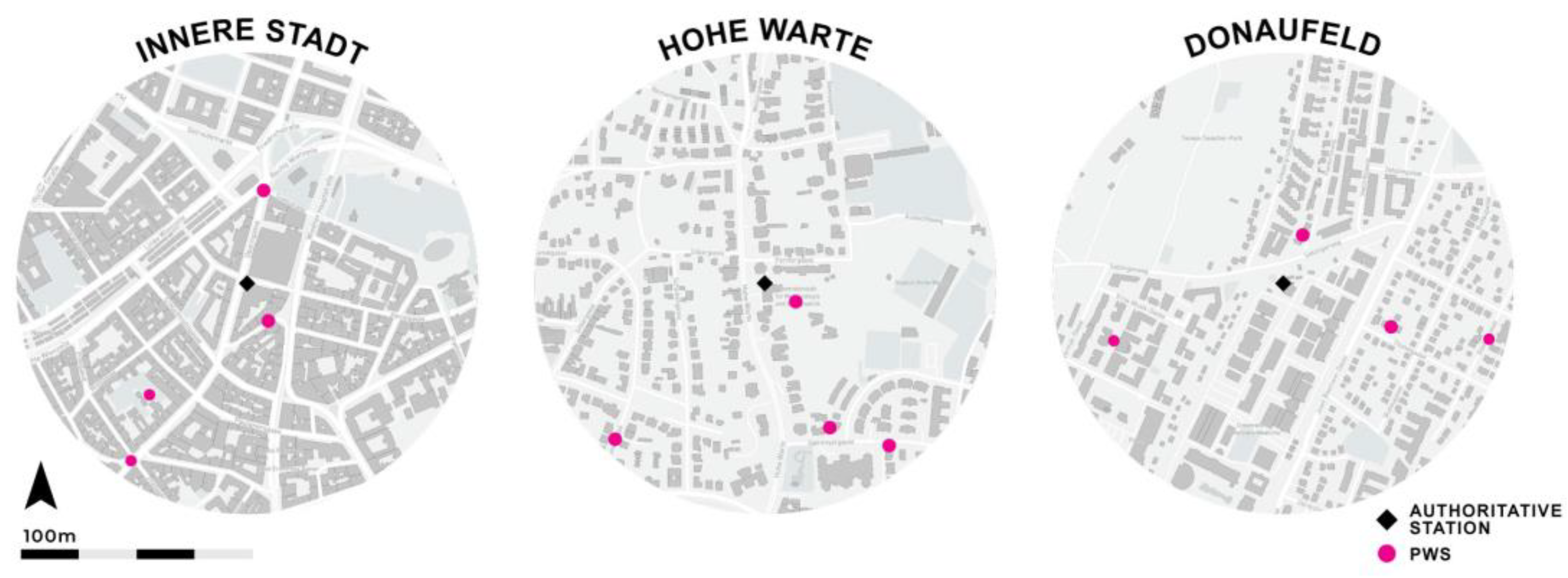
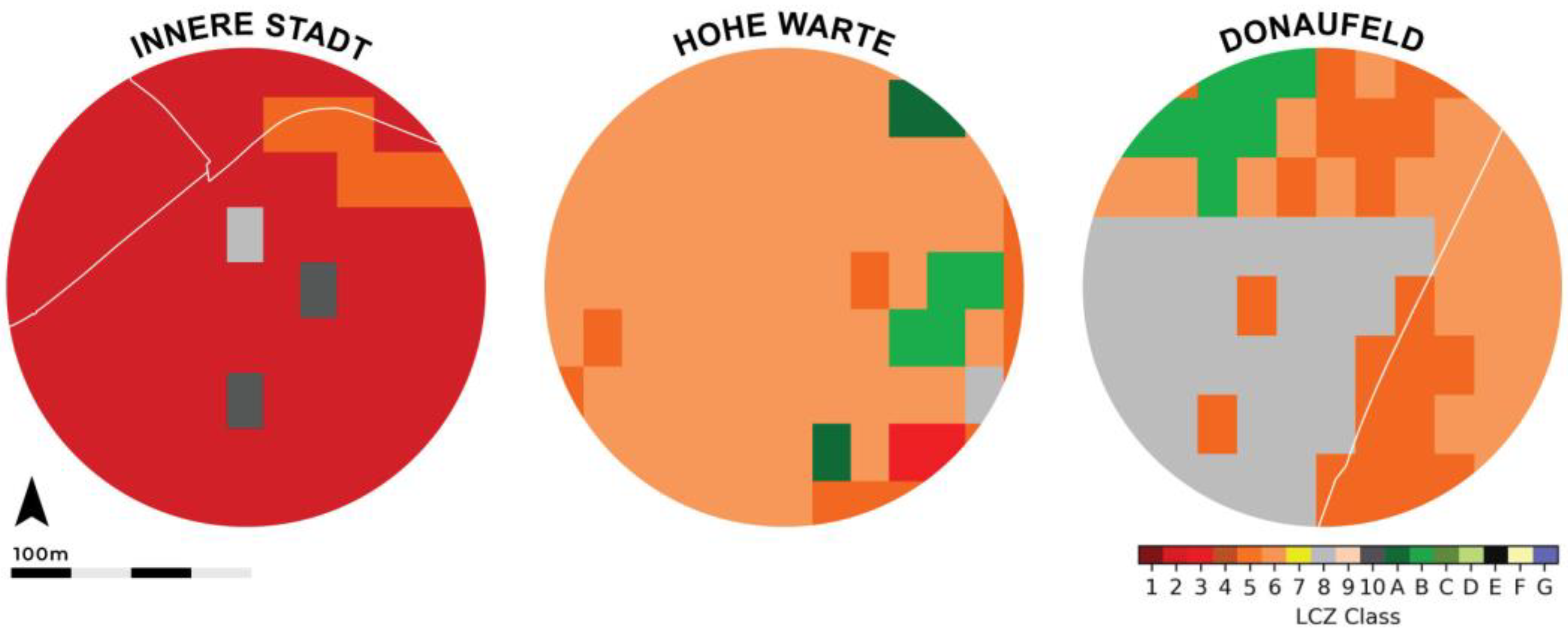
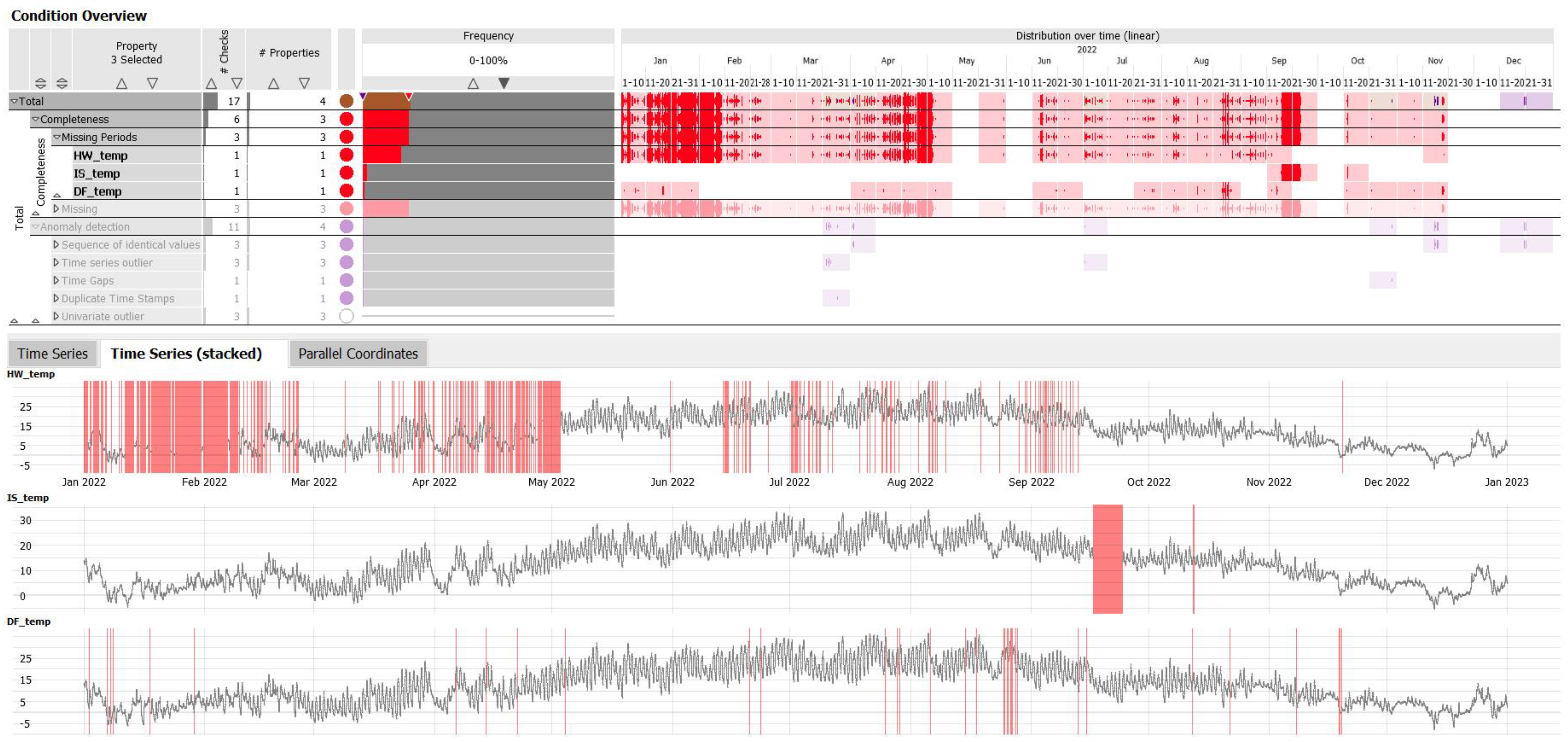
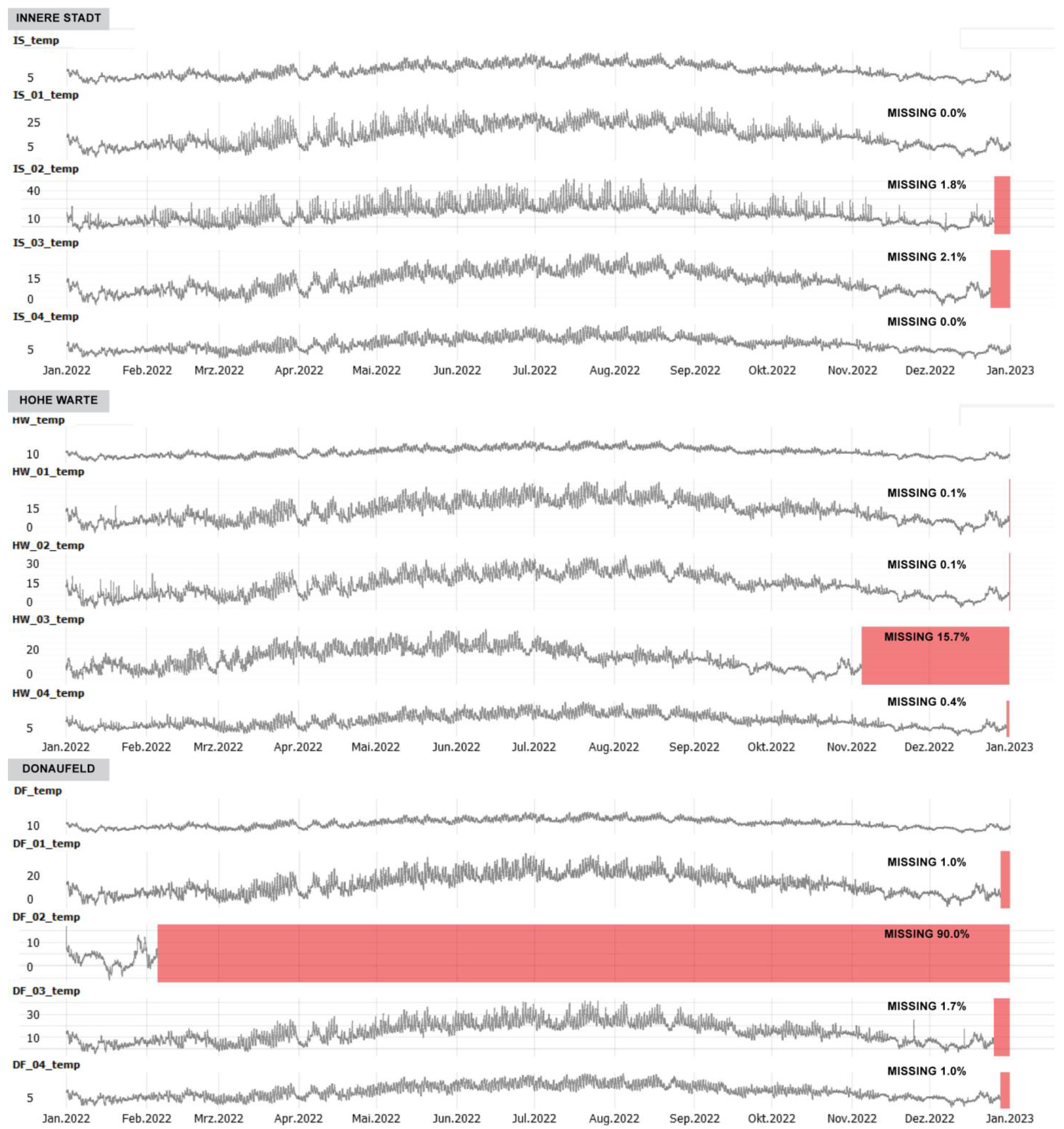
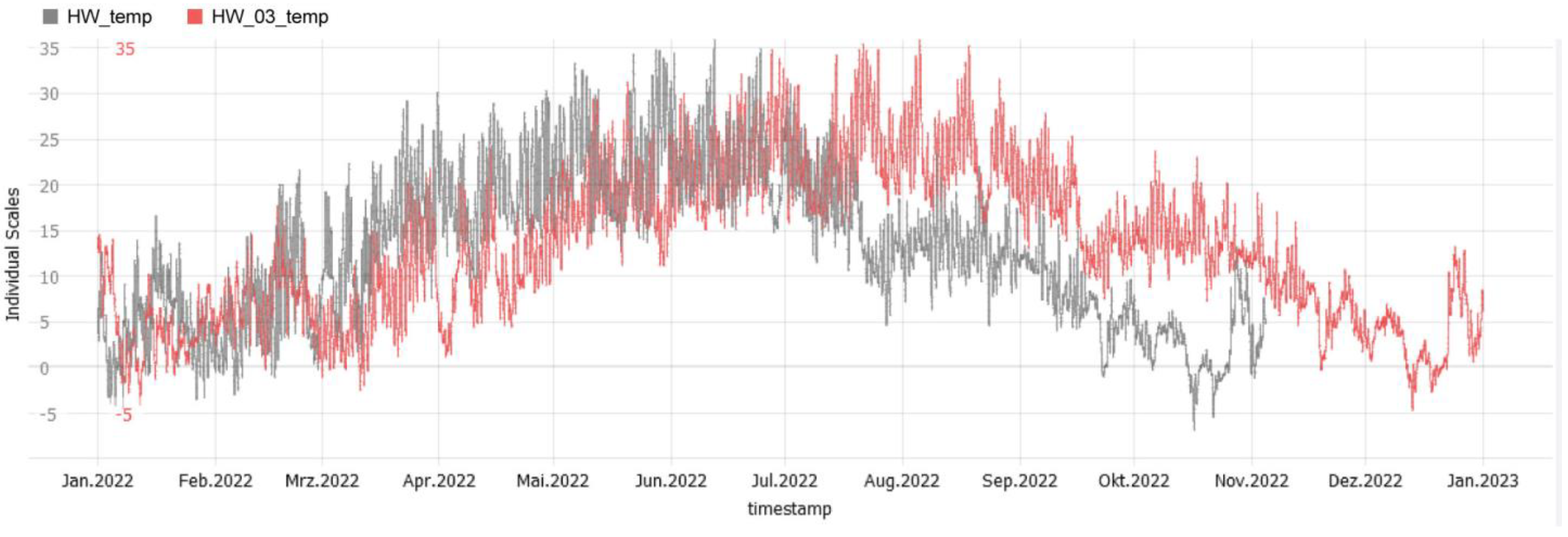
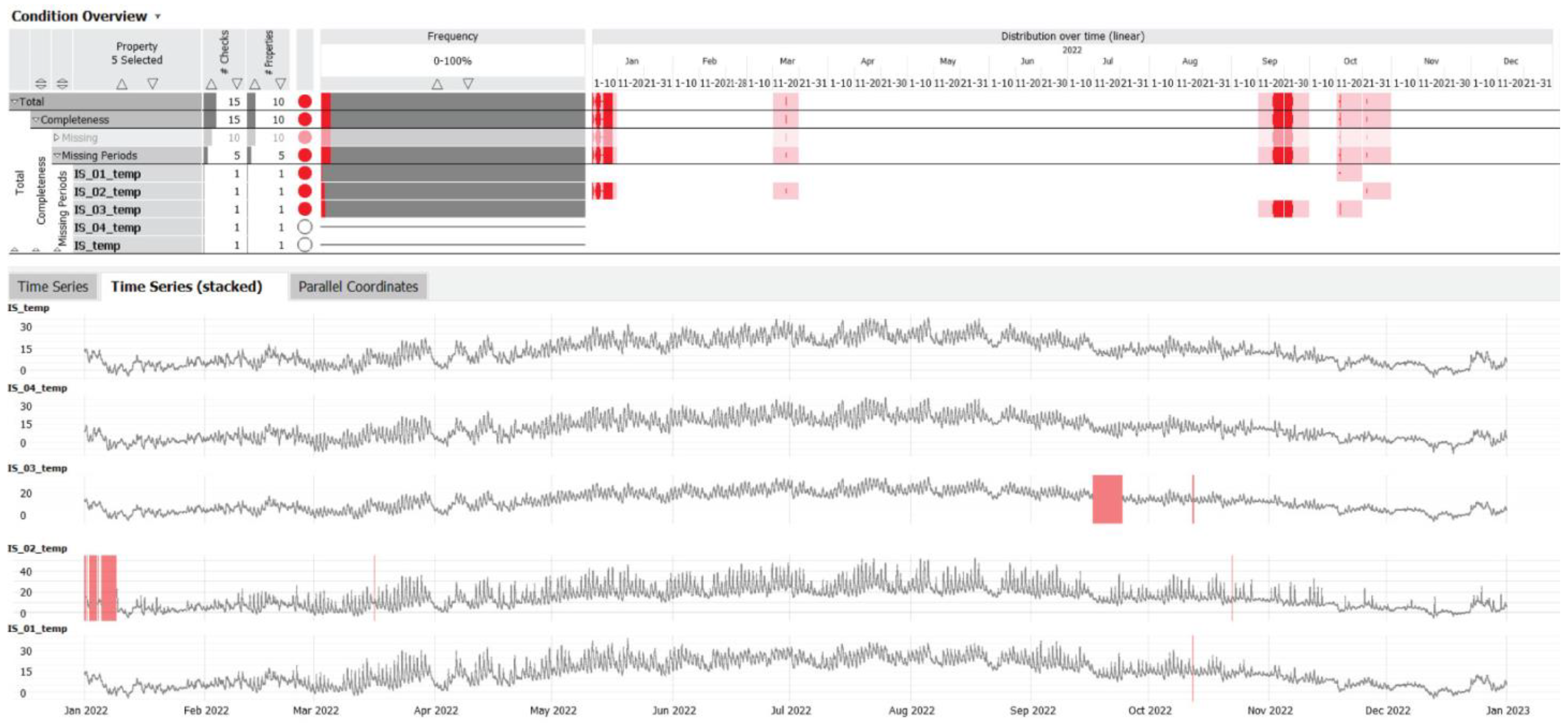
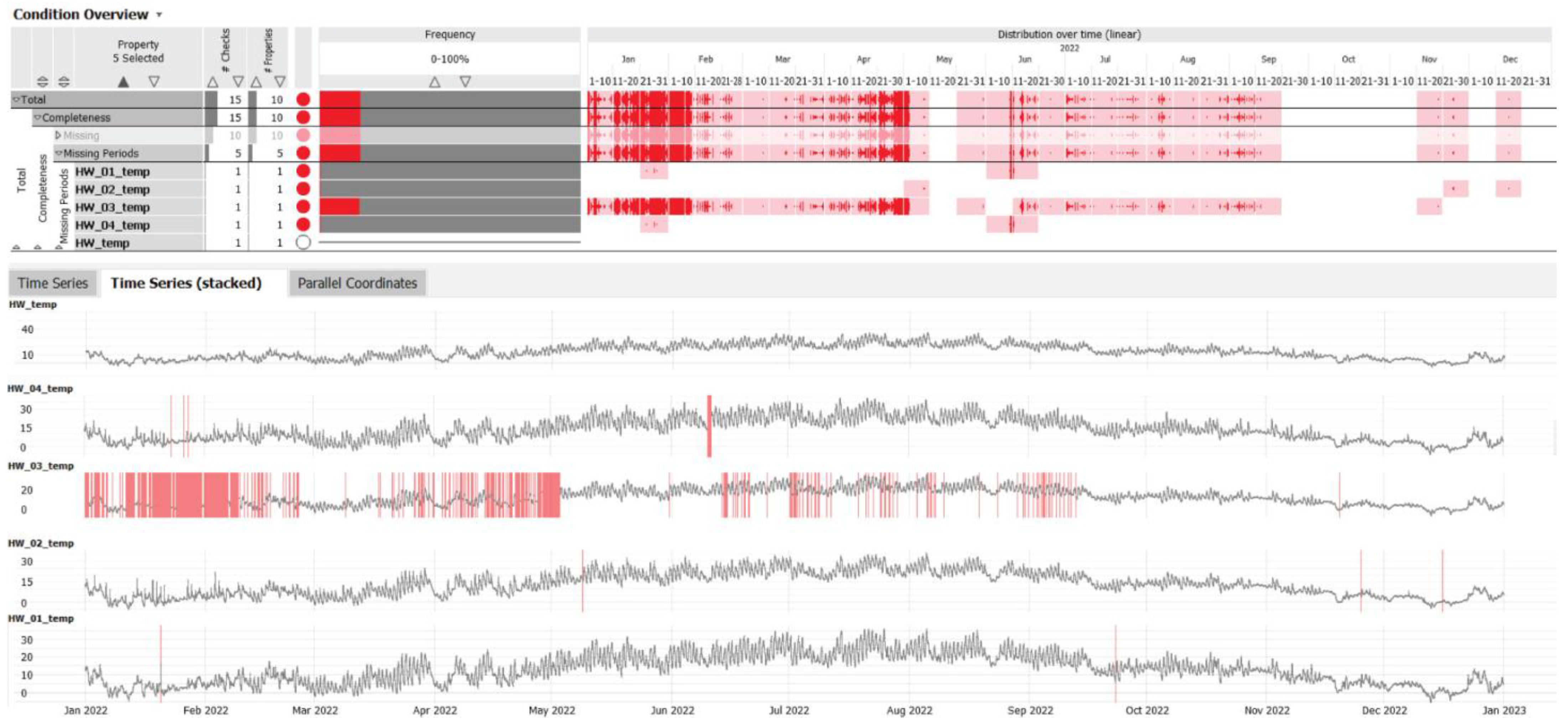
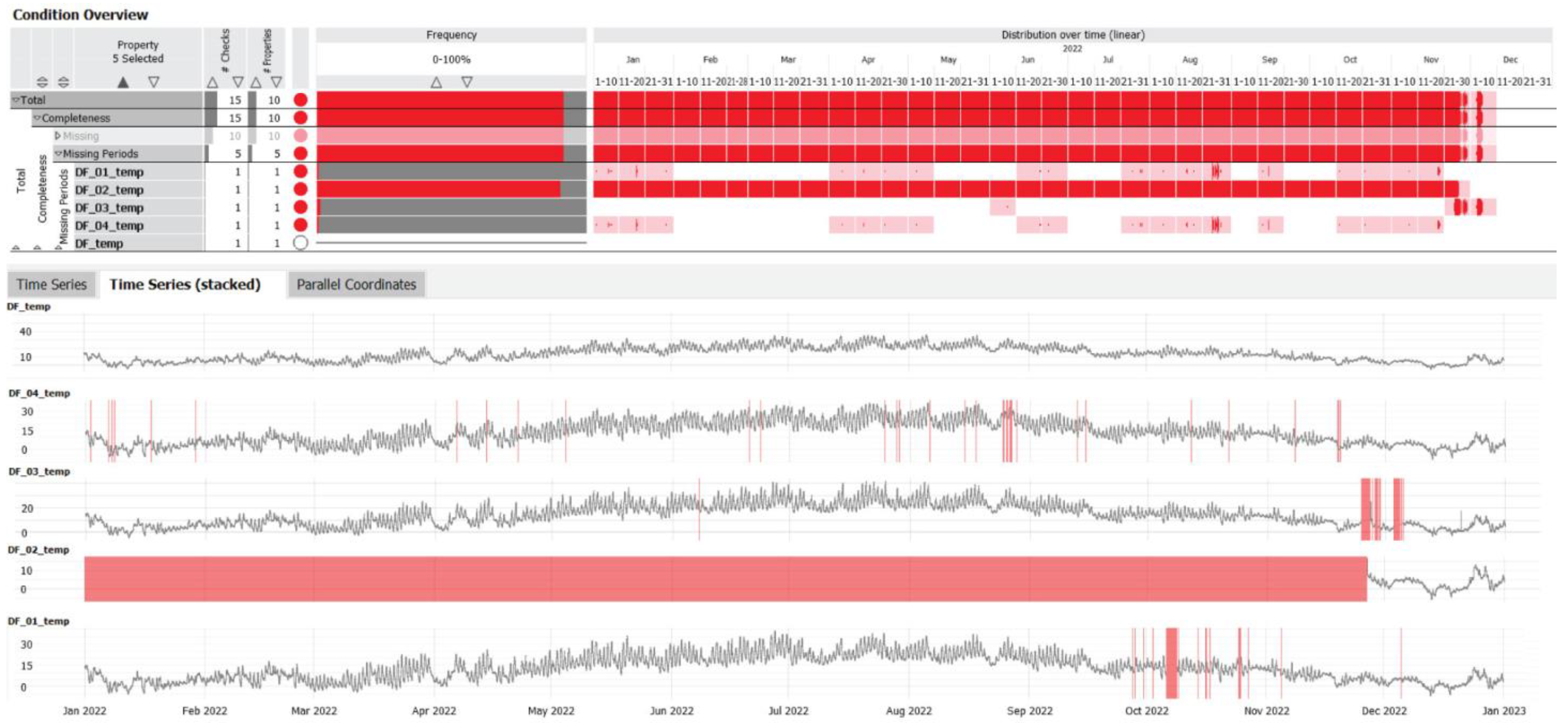
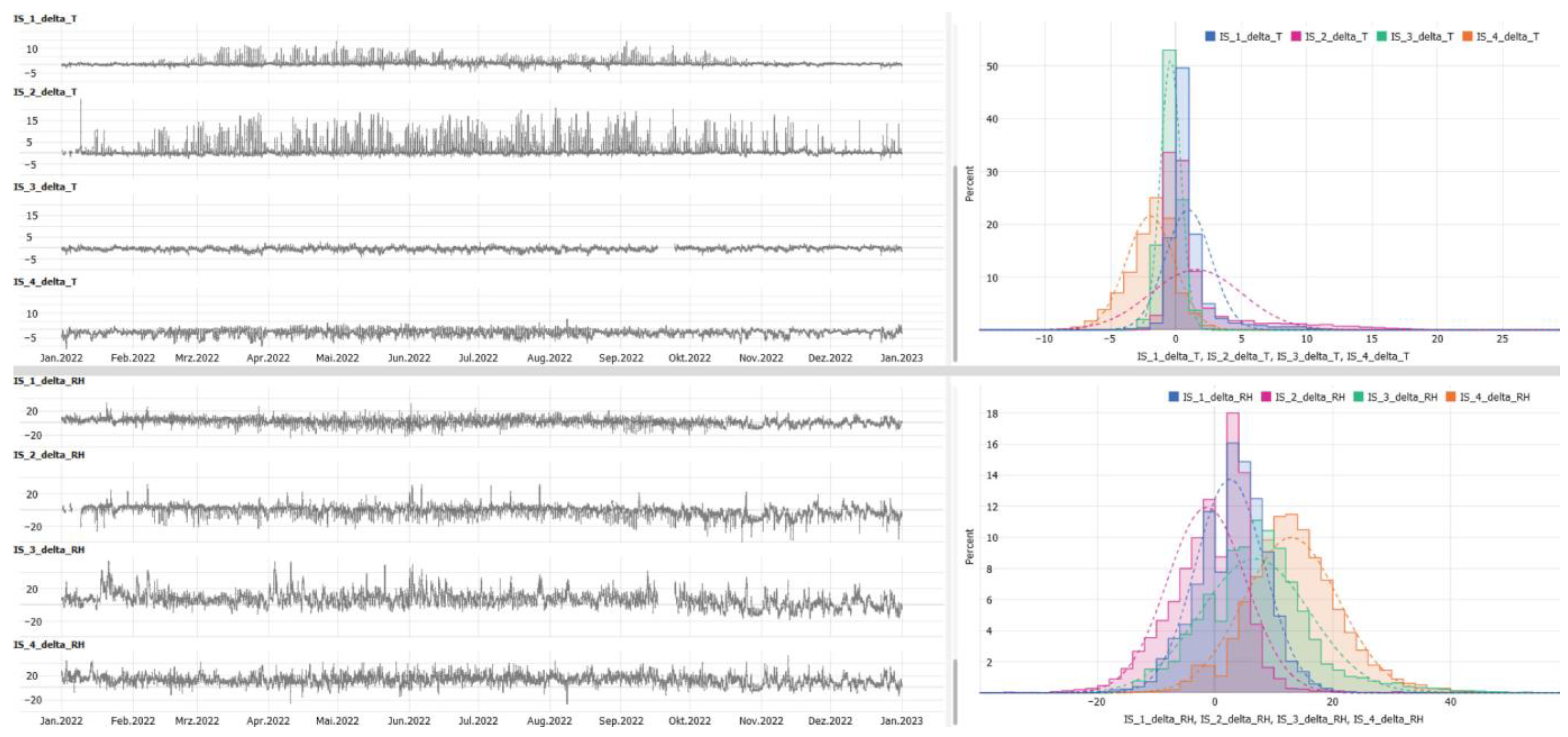
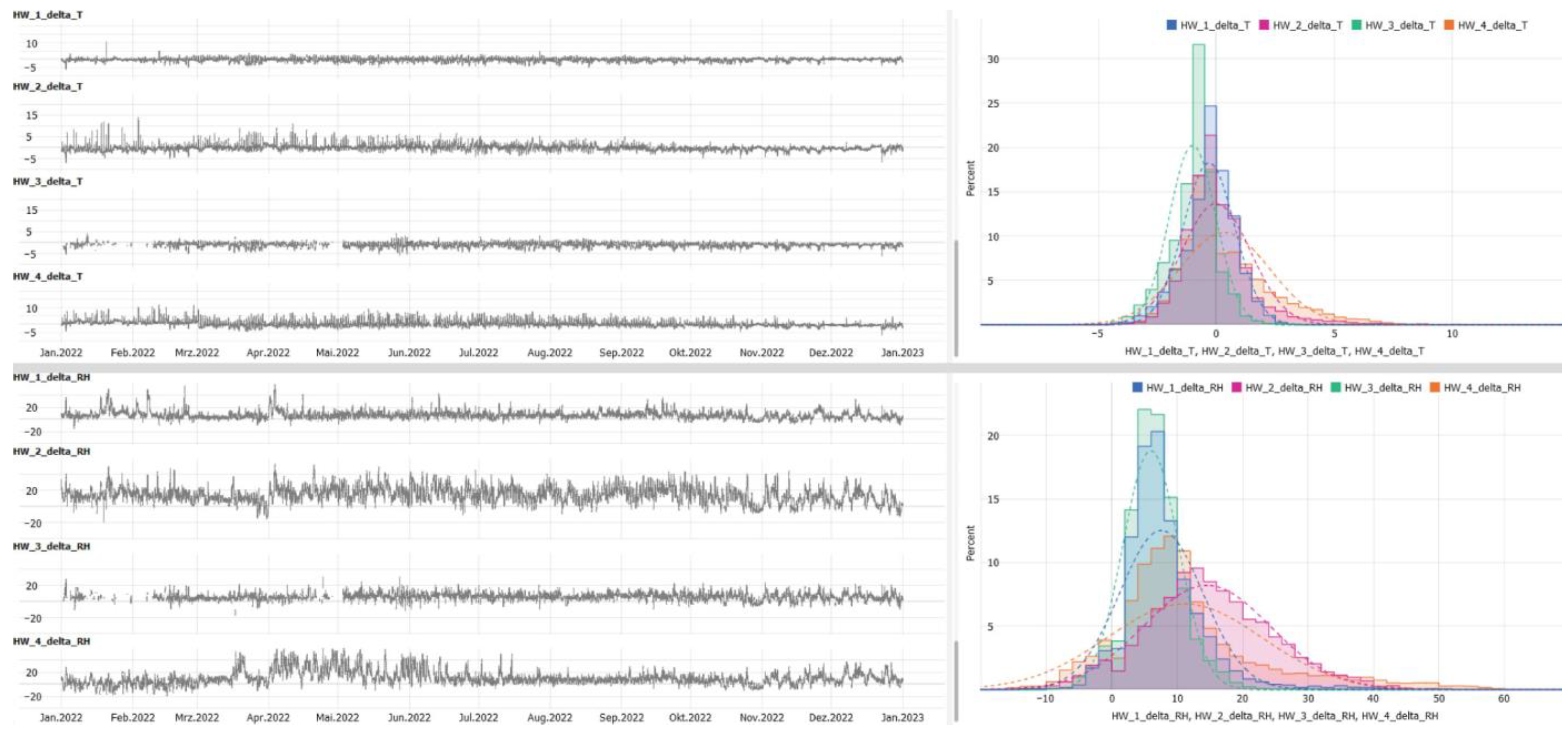

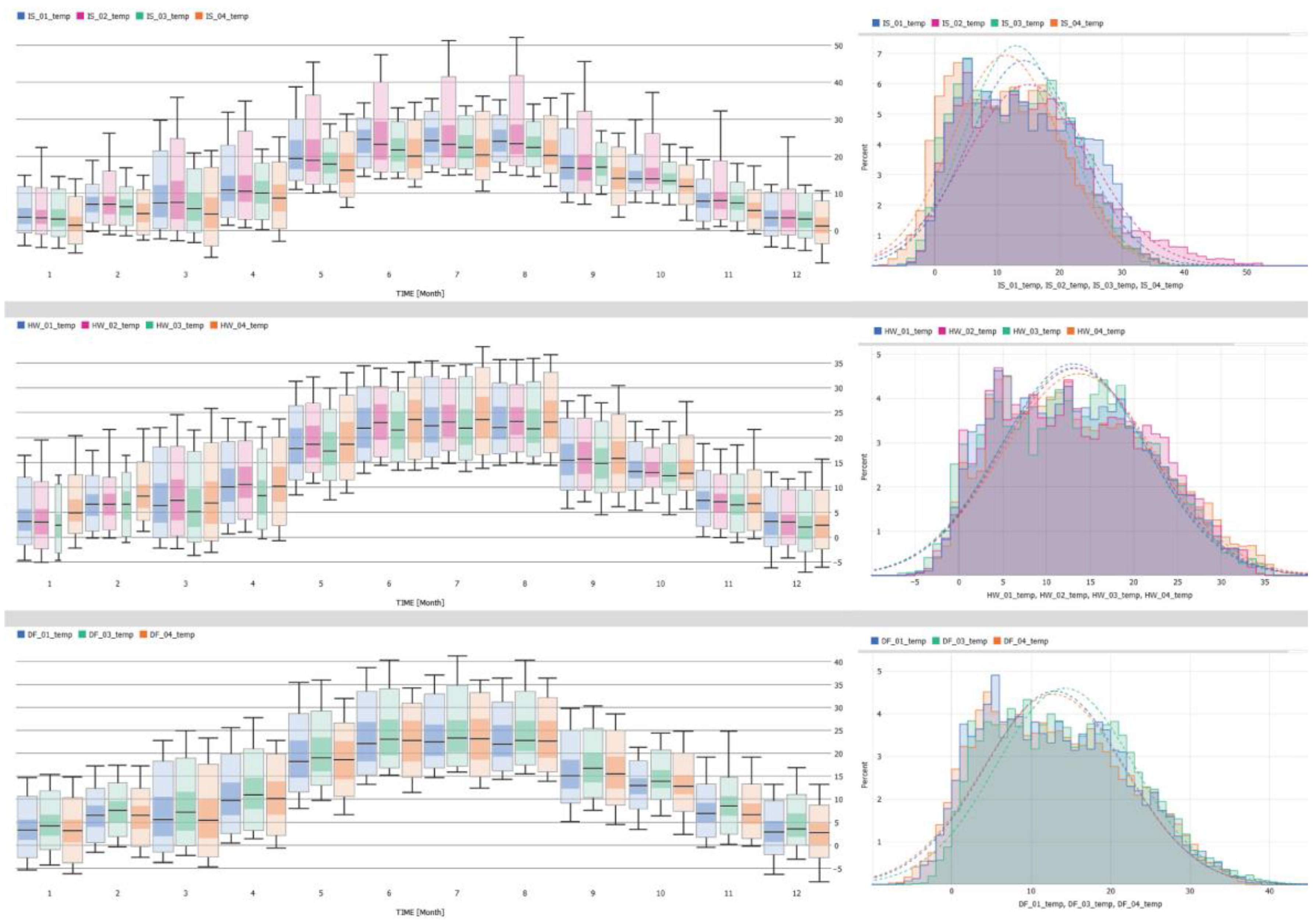
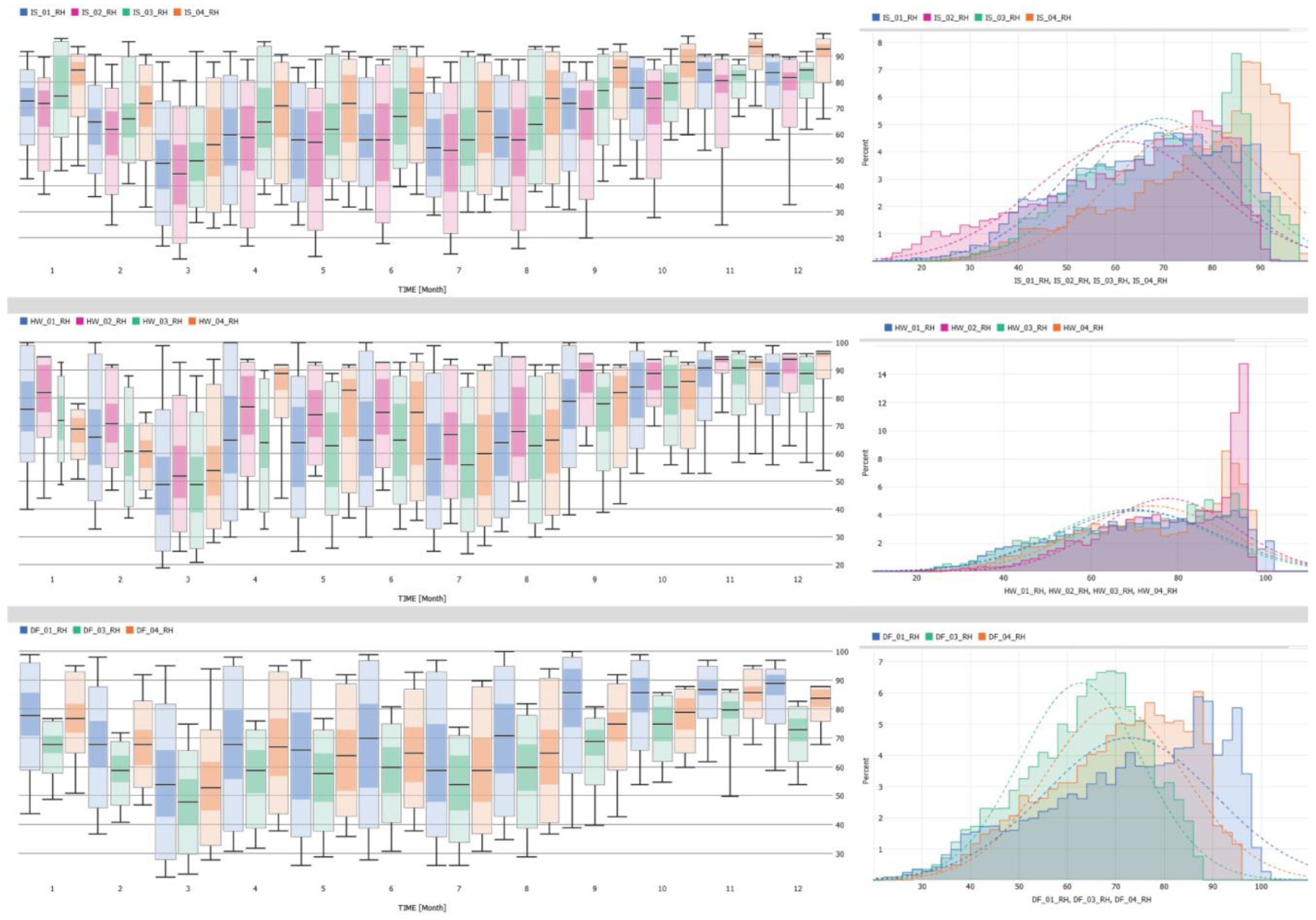
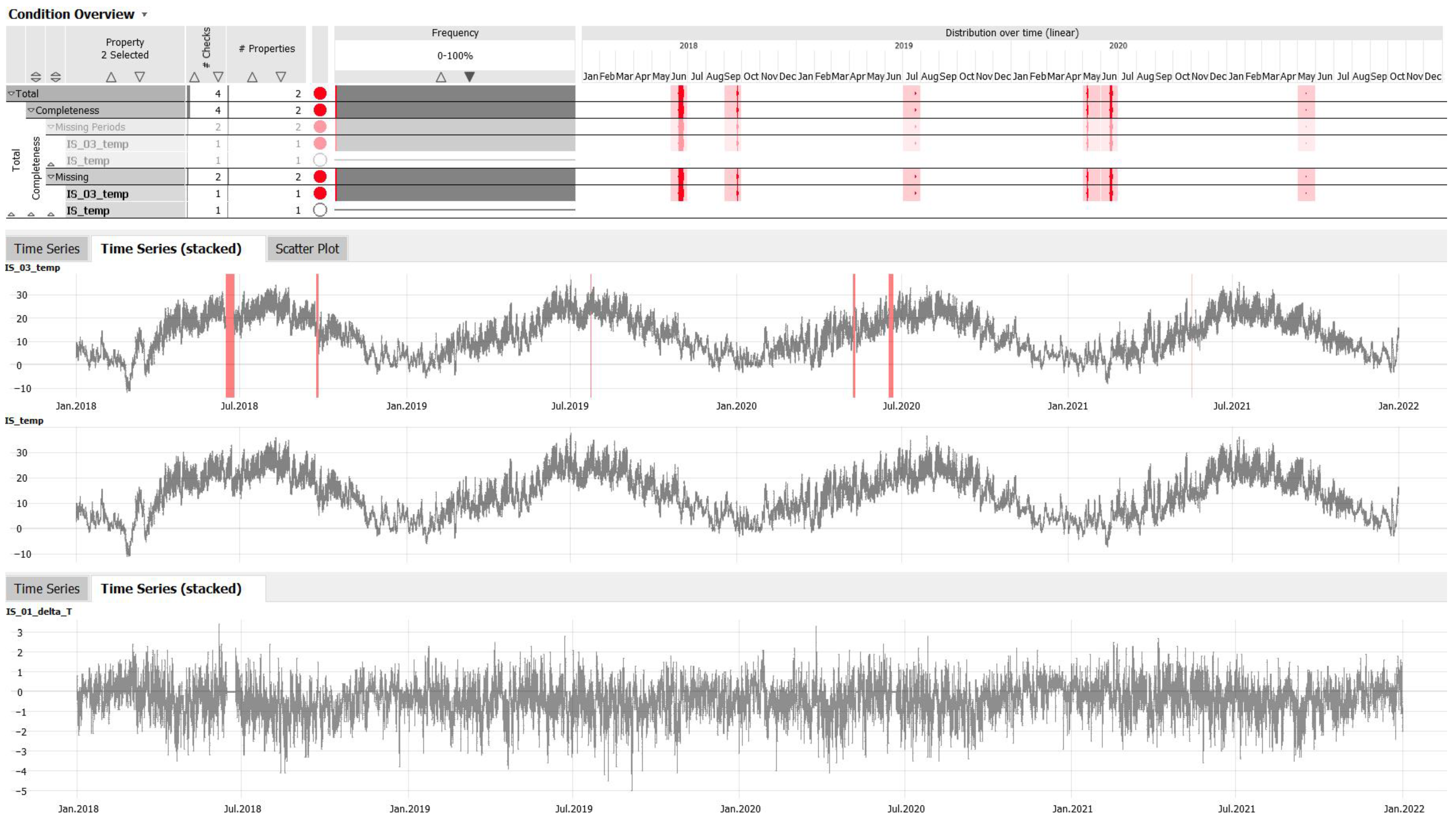
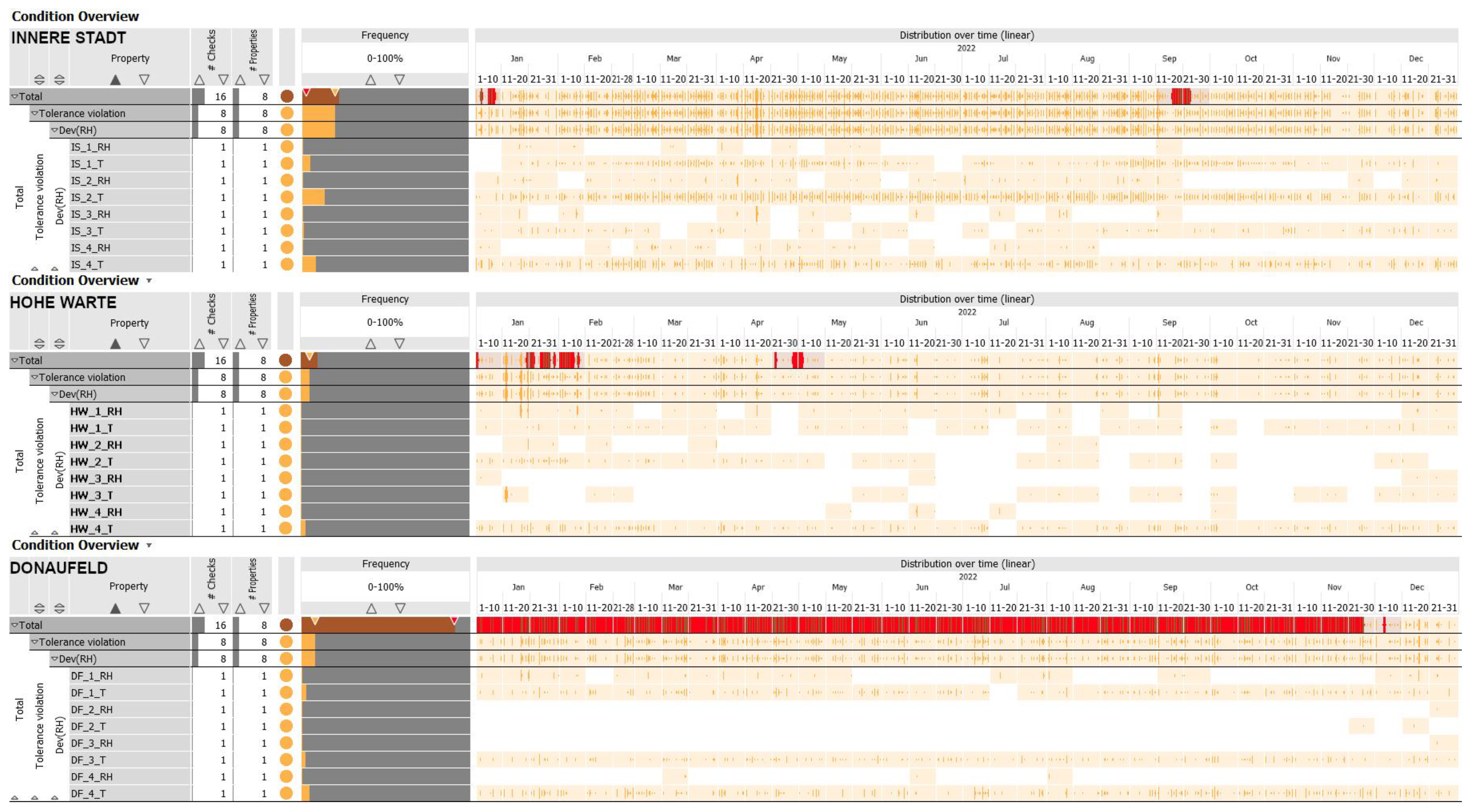
| Authoritative Stations | Personal Weather Stations (PWS) | ||||||
|---|---|---|---|---|---|---|---|
| Location | Latitude, Longitude | Elevation [m] | Location | Short Name | Latitude, Longitude | Elevation [m] | PWS ID |
| Innere Stadt | 48.198334, 16.366945 | 177 | Margaretenstraße | IS_01 | 48.197665, 16.366927 | 187 | 70:ee:50:02:a9:68 |
| Margaretenstraße | IS_02 | 48.195364, 16.363465 | 184 | 70:ee:50:05:0a:08 | |||
| Mühlgasse | IS_03 | 48.196426, 16.364049 | 174 | 70:ee:50:00:c1:9c | |||
| Rechte Wienzeile | IS_04 | 48.200000, 16.366699 | 174 | 70:ee:50:04:fd:26 | |||
| Hohe Warte | 48.248611, 16.355833 | 198 | Formanekgasse | HW_01 | 48.245353, 16.351419 | 192 | 70:ee:50:5f:61:72 |
| Gallmeyergasse | HW_02 | 48.245697, 16.358777 | 189 | 70:ee:50:2c:89:cc | |||
| Hohe Warte | HW_03 | 48.248461, 16.356298 | 202 | 70:ee:50:3a:35:a2 | |||
| Klabundgasse | HW_04 | 48.246181, 16.357588 | 186 | 70:ee:50:13:51:5c | |||
| Donaufeld | 48.257221, 16.431389 | 160 | Doeltergasse | DF_01 | 48.256355, 16.437098 | 156 | 70:ee:50:03:81:02 |
| Erna-Musik-Gasse | DF_02 | 48.256376, 16.427122 | 158 | 70:ee:50:96:cf:02 | |||
| Flandorferweg | DF_03 | 48.258248, 16.432134 | 162 | 70:ee:50:2b:27:3a | |||
| Thonetgasse | DF_04 | 48.256573, 16.434137 | 159 | 70:ee:50:00:63:84 | |||
| Location | Short Name | PWS ID | Total Number of Tolerance Violations for Temperature Values | Total Number of Tolerance Violations for Humidity Values |
|---|---|---|---|---|
| Innere Stadt | IS_01 | 70:ee:50:02:a9:68 | 1133 | 885 |
| IS_02 | 70:ee:50:05:0a:08 | 1534 | 1496 | |
| IS_03 | 70:ee:50:00:c1:9c | 1098 | 583 | |
| IS_04 | 70:ee:50:04:fd:26 | 1581 | 1019 | |
| Hohe Warte | HW_01 | 70:ee:50:5f:61:72 | 823 | 838 |
| HW_02 | 70:ee:50:2c:89:cc | 372 | 158 | |
| HW_03 | 70:ee:50:3a:35:a2 | 714 | 607 | |
| HW_04 | 70:ee:50:13:51:5c | 1016 | 373 | |
| Donaufeld | DF_01 | 70:ee:50:03:81:02 | 1011 | 863 |
| DF_02 | 70:ee:50:96:cf:02 | 5 | 1 | |
| DF_03 | 70:ee:50:2b:27:3a | 912 | 95 | |
| DF_04 | 70:ee:50:00:63:84 | 1217 | 363 |
Disclaimer/Publisher’s Note: The statements, opinions and data contained in all publications are solely those of the individual author(s) and contributor(s) and not of MDPI and/or the editor(s). MDPI and/or the editor(s) disclaim responsibility for any injury to people or property resulting from any ideas, methods, instructions or products referred to in the content. |
© 2023 by the authors. Licensee MDPI, Basel, Switzerland. This article is an open access article distributed under the terms and conditions of the Creative Commons Attribution (CC BY) license (https://creativecommons.org/licenses/by/4.0/).
Share and Cite
Vuckovic, M.; Schmidt, J. On the Importance of Data Quality Assessment of Crowdsourced Meteorological Data. Sustainability 2023, 15, 6941. https://doi.org/10.3390/su15086941
Vuckovic M, Schmidt J. On the Importance of Data Quality Assessment of Crowdsourced Meteorological Data. Sustainability. 2023; 15(8):6941. https://doi.org/10.3390/su15086941
Chicago/Turabian StyleVuckovic, Milena, and Johanna Schmidt. 2023. "On the Importance of Data Quality Assessment of Crowdsourced Meteorological Data" Sustainability 15, no. 8: 6941. https://doi.org/10.3390/su15086941
APA StyleVuckovic, M., & Schmidt, J. (2023). On the Importance of Data Quality Assessment of Crowdsourced Meteorological Data. Sustainability, 15(8), 6941. https://doi.org/10.3390/su15086941







